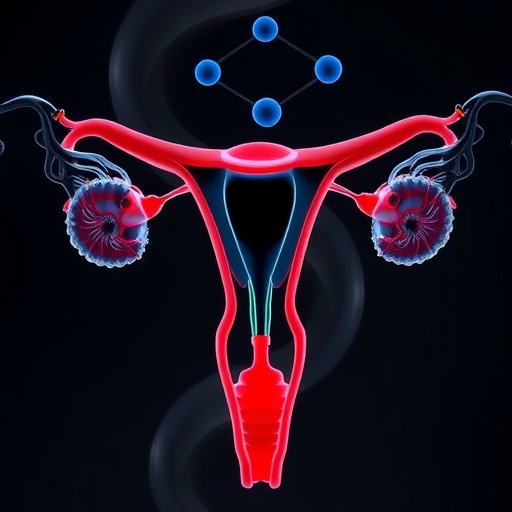March 24, 2019 – Anyone who trains for a marathon knows that individual running workouts add up over time to yield a big improvement in physical fitness. So, it should not be surprising that the cognitive benefits from workouts also accumulate to yield long-term cognitive gains. Yet, until now, there was has been little research to describe and support the underlying neurobiology. In new work being presented this week about the effects of exercise on the brain at the Cognitive Neuroscience Society (CNS) in San Francisco, researchers are finding that brain changes that occur after a single workout are predictive of what happens with sustained physical training over time.
“There is a strong and direct link between physical activity and how your brain works,” says Wendy Suzuki of New York University (NYU), who is chairing a symposium on the topic at CNS. “People still do not link physical health to brain and cognitive health; they think about fitting into a bikini or losing that last pound, not about all the brain systems they are improving and enhancing every time they work out.”
But as new research comes out to illuminate how different types, amounts, and intensities of physical activity improve brain function, cognitive neuroscientists hope to see a sea change in how the general public views exercise – from the effects of long-term training to bringing the positive effects of physical activity to socioeconomically disadvantaged communities.
The new study showing that immediate cognitive effects from exercise mirror long-term ones is the first of its kind, as short- and long-term effects are typically examined in different studies, says Michelle Voss of the University of Iowa, who led the study. Her team’s initial findings are good news for the field of cognitive neuroscience, as they suggest that the brain changes observed after a single workout study can be a biomarker of sorts for long-term training.
Study participants underwent fMRI brain scans and working memory tests before and after single sessions of light and moderate intensity exercise and after a 12-week long training program. The researchers found that those who saw the biggest improvements in cognition and functional brain connectivity after single sessions of moderate intensity physical activity also showed the biggest long-term gains in cognition and connectivity.
The study used recumbent cycles that had motorized pedals, allowing the participants to either apply their own force to turn the pedals or to let the pedals do the work. “This feature allowed us to keep pedal speed constant while only changing heart rate between conditions of light and moderate intensity activity,” Voss says. “This is novel for acute exercise paradigms, which often use sitting as a control condition.”
Voss looks forward to replications of this first study with larger samples. Her lab is currently recruiting participants for a similar study that will include 6 months of training instead of 3 months, to give participants more time to improve cardiorespiratory fitness. But in the meantime, she says: “Think about how physical activity may help your cognition today and see what works. Day-by-day, the benefits of physical activity can add up.”
Michelle Carlson of Johns Hopkins University is working to bring that message to socioeconomically disadvantaged communities through a novel program called Experience Corps Program, which embeds physical activity into weekly volunteering for older adults to mentor children in local elementary schools. “We need to address socioeconomic barriers like cost and accessibility to motivate older adults to regularly engage in healthful behaviors,” Carlson says. “And many people don’t appreciate the power of physical activity for our brains.”
Multiple studies from the Experience Corps Program have found that the regular walking and other physical activity generated from the volunteering experience has resulted in improved memory and other cognitive functions, as well as changes to the prefrontal cortex that mirror those seen after 6 months of exercise in cognitively at-risk older adults. “These and related findings in my lab and others have contributed to our understanding that targeting low-intensity lifestyle activity is increasingly being recognized as important and scalable intervention to promote any physical activity,” she says.
Her team has also developed a 3-D game to simulate real-world activity for both cognition and mobility. Carlson will be presenting new data at the CNS meeting on 14 participants who completed a 5-week intervention with the game. “What is cool is that most participants, regardless of baseline cognitive and physical limitations, learn and improve steadily over sessions,” she says. “We want to help a large segment of the aging population that is sedentary or unable to tap into volunteer opportunities by providing opportunities to increase meaningful physical activity.”
Suzuki has experienced the transformative power of exercise on the brain firsthand. When working to lose weight, she notices her memory improving over time. She became so fascinated by the link between physical activity and brain function that she transformed her lab entirely, from one that studied the hippocampus in nonhuman primate to one that focused solely on human cognition and exercise. “I’ve really gone all in,” she says.
There are a whole host of questions cognitive neuroscientists can help answer — from how much and what types of exercise are optimal for brain health to how to translate findings from young, healthy populations to older, at-risk ones. Suzuki hopes to see improved neuroimaging techniques in the coming years that better capture what happens in the brain during and after exercise.
###
The symposium “Imaging the immediate and long-term effects of exercise in humans” is taking place at the CNS annual meeting in San Francisco – featuring talks by Michelle Voss and Michelle Carlson, as well as Michael Yassa and Emrah Duzel. More than 1,500 scientists are attending the meeting from March 23-26, 2019.
CNS is committed to the development of mind and brain research aimed at investigating the psychological, computational, and neuroscientific bases of cognition. Since its founding in 1994, the Society has been dedicated to bringing its 2,000 members worldwide the latest research to facilitate public, professional, and scientific discourse.
Media Contact
Lisa M.P. Munoz
[email protected]




